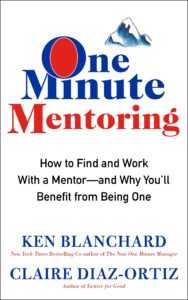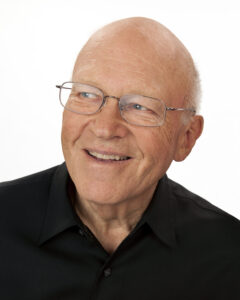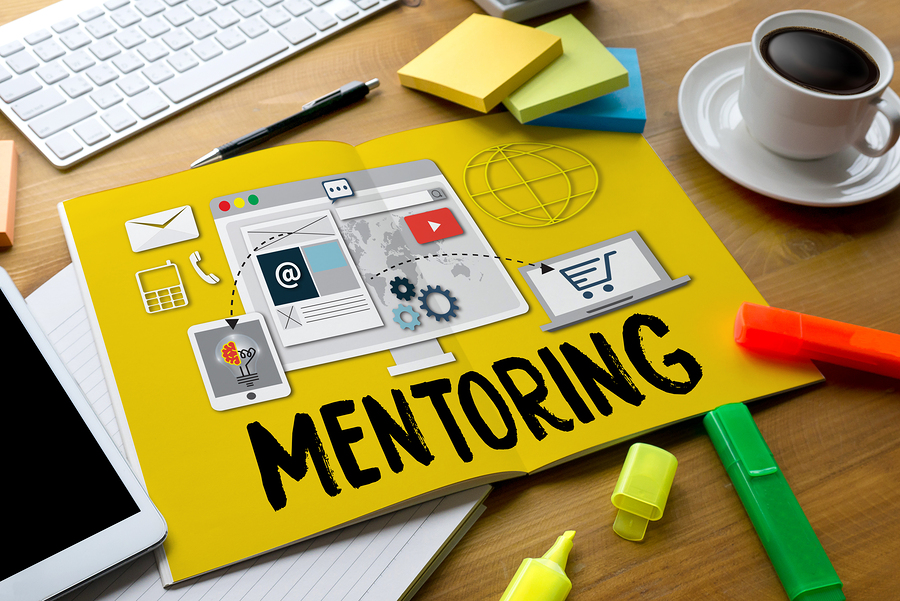Become a One-Minute Mentor
I’m a big fan of mentoring relationships. A mentor may be a formal relationship with someone or it may be a virtual relationship. In fact, the reason I read so much is that I’m curious and constantly learning from others. I’d rather learn from someone else’s mistakes than make them myself. I’d rather take a shortcut if someone else has already figured out the best way forward.
One Minute Mentoring: How to Find and Work With a Mentor-and Why You’ll Benefit from Being One is a new book by Claire Diaz-Ortiz and Ken Blanchard. Claire Diaz-Ortiz, an early employee of Twitter, was named one of the 100 Most Creative People in Business by Fast Company. Leadership guru Ken Blanchard is the author or coauthor of more than 60 books—including the iconic bestseller The One Minute Manager —with combined sales of more than 21 million copies.
Why a book on mentoring?
We believe that behind every successful person, you’ll find a mentor—usually several—who guided their journey. There are many famous mentor/mentee examples out there—Socrates and Plato, Warren Buffett and Bill Gates, Steve Jobs and Mark Zuckerberg, Maya Angelou and Oprah Winfrey—the list goes on and on. With the pace of change today, we believe that mentoring can ground you and guide you in a way that few other activities can. The amazing thing about mentoring is that in many ways it benefits the mentor as much as the mentee.
How to Start
Many people who want a mentor don’t know where to start. You point out that “Potential mentors are all around you once you start looking for them.” How do you identify potential mentors? Ones who match your needs?
 There’s an old saying that when the student is ready, the teacher appears. We’ve found in our own lives that mentors are all around you once you start looking for them. You might find a mentor in a boss, teacher, neighbor, friend, or colleague. Or you might find one through a professional association, volunteer organization, or online mentoring organization.
There’s an old saying that when the student is ready, the teacher appears. We’ve found in our own lives that mentors are all around you once you start looking for them. You might find a mentor in a boss, teacher, neighbor, friend, or colleague. Or you might find one through a professional association, volunteer organization, or online mentoring organization.
That old saying works both ways—when you’re ready to become a teacher/mentor, the student/mentee appears. We encourage people to step up and become mentors, because you won’t fully discover, appreciate, or leverage what you have until you start giving it away.
As for identifying a potential mentor/mentee, it’s important to think about compatibility. In the book, we show that there are two aspects of working with someone: essence and form. Essence is all about sharing heart-to-heart and finding common values. Form is about structure—how you might work together. For a mentoring relationship to thrive, you need to establish that heart-to-heart connection.
Keep a Journal of Your Journey
Why is it important to keep a journal of your mentoring journey?
One of Ken’s most important mentors, Peter Drucker, taught him that, “if you can’t measure it, you can’t manage it.” It’s important to keep a journal of your mentoring journey so you can see where you’ve been and stay on track with where you’re going. In the book, the first step in our MENTOR model stands for “Mission”—creating a vision and purpose for the mentorship. Keeping a journal as you engage with your mentor/mentee will reveal the ways you’re fulfilling—or not fulfilling—that mission. For example, if your goal in a mentoring relationship is to create a career you love, you can record in your journal each step you take toward accomplishing that mission.
“Tactful honesty in a mentoring relationship builds trust.” How have you seen that in practice in your own lives?
Ken’s earliest mentor was his father, a lieutenant in the Navy during World War II. Ken’s dad had a brilliant way of guiding Ken without dampening his spirit. For example, when Ken was in junior high, he was elected president of his seventh-grade class. He came home all proud of winning the election. Instead of telling Ken he was the greatest thing since sliced bread—or, on the other hand, telling him not to get a big head—Ken’s dad said with tactful honesty, “Congratulations, Ken. But now that you’re president, don’t ever use your position. Great leaders are great because people respect and trust them, not because they have power.” That One Minute Mentoring taught Ken one of the most valuable lessons he ever learned about leadership.
What’s the difference between a coach and a mentor?
We consider coaching to be just one of the functions of a good mentor. Coaching has very specific objectives and goals focused on things like developing potential, improving relationships, and enhancing performance. Although mentors use coaching skills with their mentees, they also do big-picture things like serving as role models, sharing network contacts, and making helpful introductions. In other words, they work and advocate for their mentees’ all-around growth and development.
Any good mentor will use a coaching process and coaching skills to help the mentee develop their full potential and achieve their big-picture goals, but mentorship is broader than coaching.
I’ve interviewed Ken previously (you need no introduction; what a record of influence!) and, Claire, it seems I know you from one of your previous books, Twitter for Good, in addition to your blogging and the fact that we have mutual friends. I’m not surprised you found each other! Would you comment on cross-generational mentoring? Is this happening more or less today?
Your comment—“I’m not surprised you found each other!”—is interesting, Skip, because it points to what we talked about earlier: Look for essence in a mentoring partner before you look for form. Again, essence is all about sharing heart-to-heart and finding common values. Form is about structure—how you’ll work together. If you don’t share the same values and feel some kind of connection, chances are good your mentorship is not going to succeed, no matter how much structure you put around the relationship.
As for cross-generational mentoring, that’s when a young person is paired with an older person, so they can both learn and grow. Because Ken is a leadership expert in his mid-seventies and Claire is a former Twitter executive in her mid-thirties, we are a living example of the lessons we’re teaching.
We’d like to see a lot more cross-generational mentoring happening. Baby Boomers are retiring at a rate of about 10,000 a day, which is causing a brain drain in our industries. At the same time, older people who are staying in the workforce could really use the skills and insights younger people have to offer. For example, Claire has taught Ken a lot about technology and social media—and Ken has taught Claire a thing or two about leadership. It’s a win-win, for sure!
Why You Should Start a Mentoring Program
Why is it important for companies to start mentoring programs?
 Establishing a formal mentoring program is a great way to break down silos and harvest the latent talent within an organization. Mentoring programs help employees be more successful, which revitalizes the organization. There are so many benefits for the organization—more highly trained people, increased engagement, decreased turnover, and the development of new leaders, to name just a few. As we mentioned above, cross-generational mentoring is an excellent strategy for transferring older employees’ knowledge and skills to younger members of the workforce. Finally, it really is easier than you may think. The reality is that many folks are thrilled to be mentors—or to have a mentor—so the moment a corporate program is established, the slots fill up fast. All this to say—start a mentoring program today! When people start sharing and caring, good things happen.
Establishing a formal mentoring program is a great way to break down silos and harvest the latent talent within an organization. Mentoring programs help employees be more successful, which revitalizes the organization. There are so many benefits for the organization—more highly trained people, increased engagement, decreased turnover, and the development of new leaders, to name just a few. As we mentioned above, cross-generational mentoring is an excellent strategy for transferring older employees’ knowledge and skills to younger members of the workforce. Finally, it really is easier than you may think. The reality is that many folks are thrilled to be mentors—or to have a mentor—so the moment a corporate program is established, the slots fill up fast. All this to say—start a mentoring program today! When people start sharing and caring, good things happen.
For more information, see One Minute Mentoring: How to Find and Work With a Mentor-and Why You’ll Benefit from Being One

